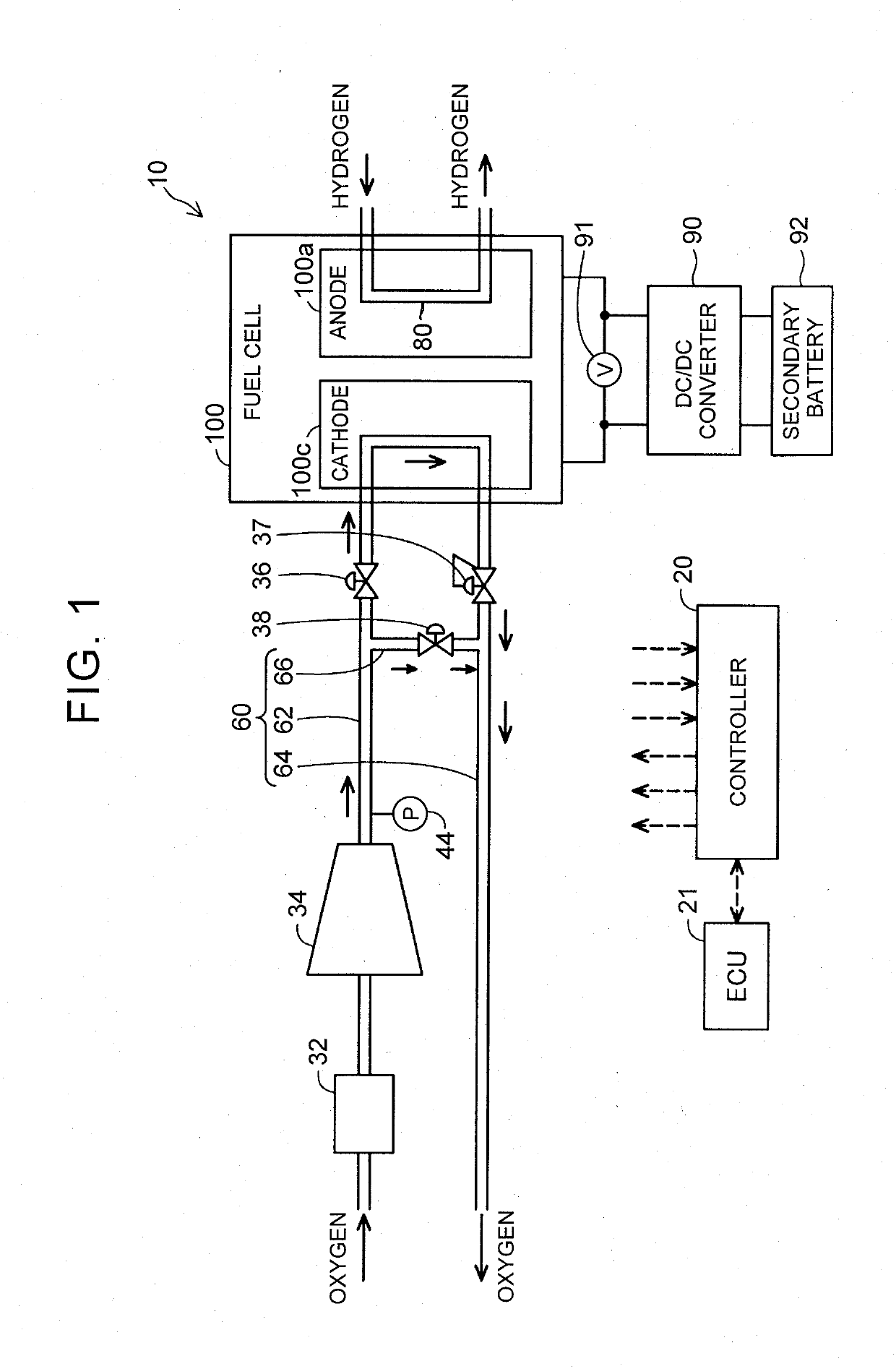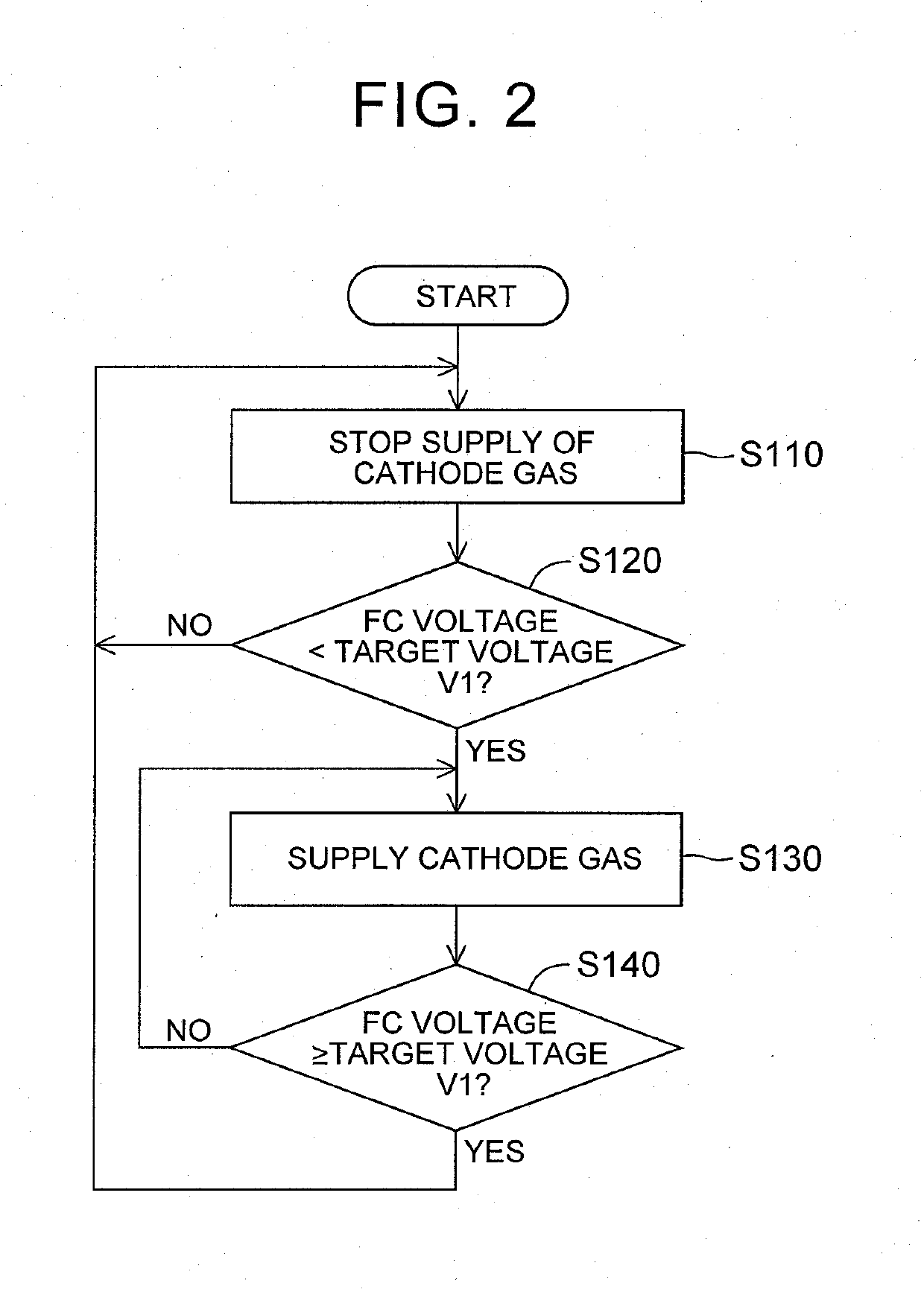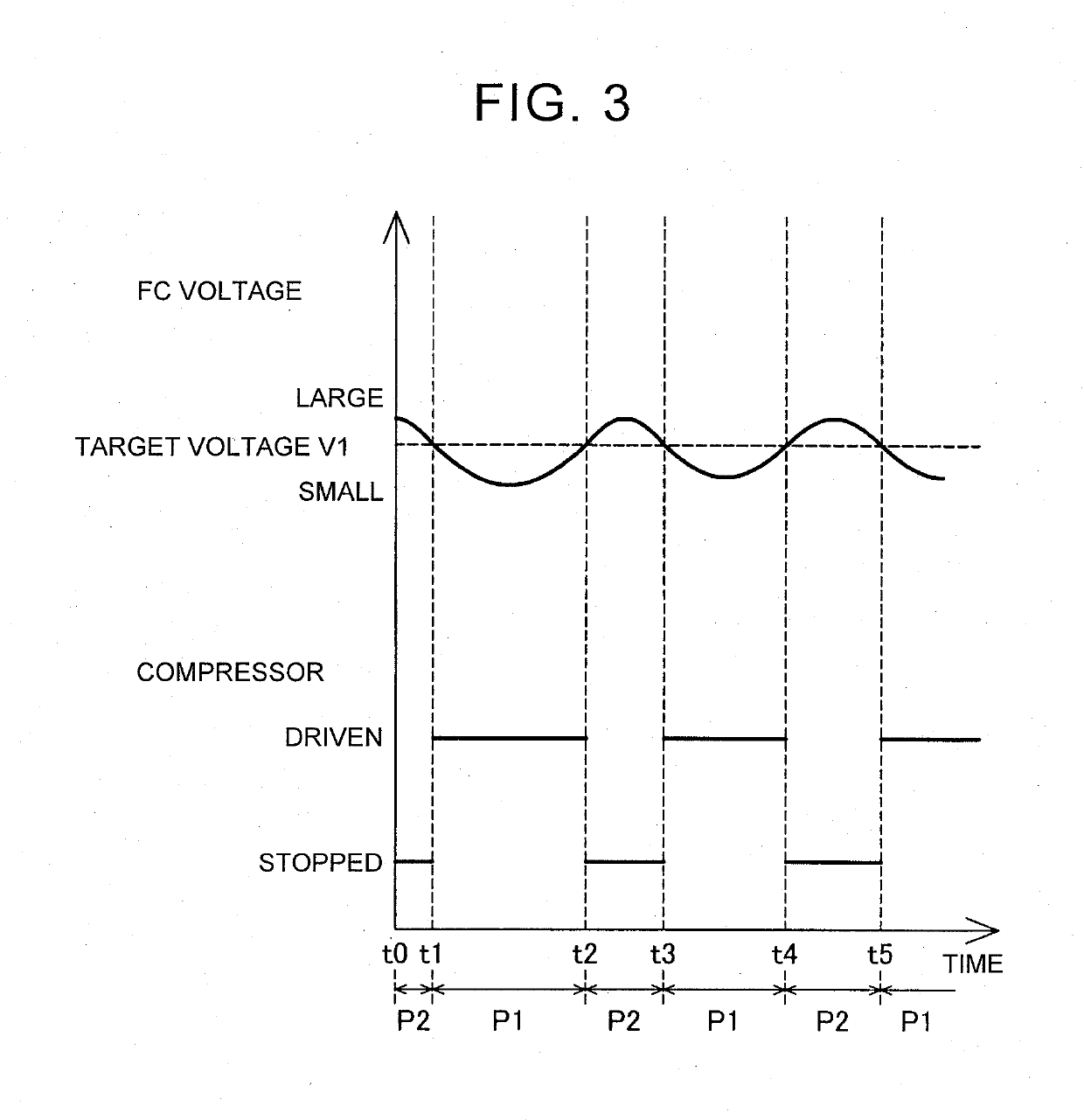Fuel cell system and method of controlling the same
- Summary
- Abstract
- Description
- Claims
- Application Information
AI Technical Summary
Benefits of technology
Problems solved by technology
Method used
Image
Examples
first embodiment
A. First Embodiment
[0016]FIG. 1 shows a fuel cell system 10 as one embodiment of the disclosure. The fuel cell system 10 is installed on a fuel cell vehicle, for example. In this embodiment, the fuel cell system 10 includes a fuel cell stack 100, controller 20, air flow meter 32, compressor 34, cathode gas passage 60, and anode gas passage 80.
[0017]The fuel cell stack 100 is a polymer electrolyte fuel cell that is supplied with anode gas (e.g., hydrogen gas) and cathode gas (e.g., air) as reaction gases, to generate electric power. The fuel cell stack 100 is composed of a plurality of unit cells (not shown) stacked together. The anode gas is supplied from an anode gas tank (not shown), and passes through the anode gas passage 80, to be supplied to an anode 100a of the fuel cell stack 100 and used for electrochemical reaction. A portion of the anode gas which was not used for electrochemical reaction is discharged as offgas to the outside of the fuel cell stack 100. On the other hand...
second embodiment
B: Second Embodiment
[0044]The second embodiment is different from the first embodiment in that the controller 20 is configured to charge the secondary battery 92 with regenerative power generated when driving of the compressor 34 is stopped, at the time of switching from the supply period P1 to the stop period P2, but the first and second embodiments are identical with each other in other respects. According to the second embodiment, the secondary battery 92 is charged with regenerative power, so that the fuel efficiency can be improved.
third embodiment
C: Third Embodiment
[0045]FIG. 4 is a flowchart of cathode-gas intermittent supply control according to a third embodiment. The third embodiment is different from the first embodiment in step S150 and step S160, but is identical with the first embodiment in other respects.
[0046]In the third embodiment, when the controller 20 determines that the FC voltage is smaller than the target voltage V1 (step S140: NO), the controller 20 determines whether the FC voltage is smaller than a lower-limit voltage V2 (step S150). The lower-limit voltage V2 is a voltage at which the catalyst included in the fuel cell stack 100 switches between oxidation reaction and reduction reaction, for example, and is obtained in advance by experiment or simulation. In this embodiment, the controller 20 stores the lower-limit voltage V2 in advance. In this embodiment, the lower-limit voltage V2 is smaller than the target voltage V1.
[0047]When the controller 20 determines that the FC voltage is equal to or larger t...
PUM
 Login to View More
Login to View More Abstract
Description
Claims
Application Information
 Login to View More
Login to View More - R&D
- Intellectual Property
- Life Sciences
- Materials
- Tech Scout
- Unparalleled Data Quality
- Higher Quality Content
- 60% Fewer Hallucinations
Browse by: Latest US Patents, China's latest patents, Technical Efficacy Thesaurus, Application Domain, Technology Topic, Popular Technical Reports.
© 2025 PatSnap. All rights reserved.Legal|Privacy policy|Modern Slavery Act Transparency Statement|Sitemap|About US| Contact US: help@patsnap.com



